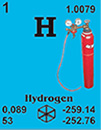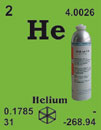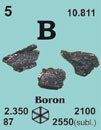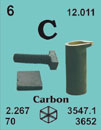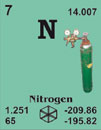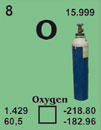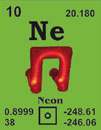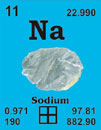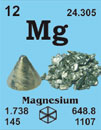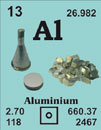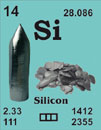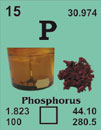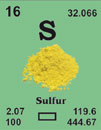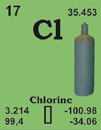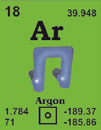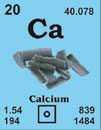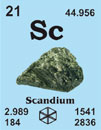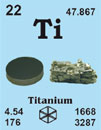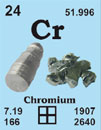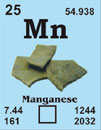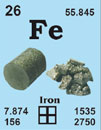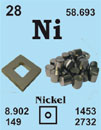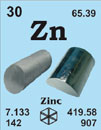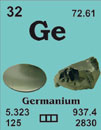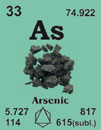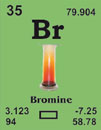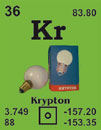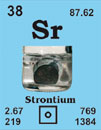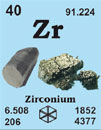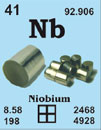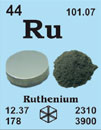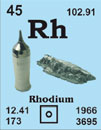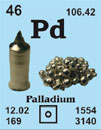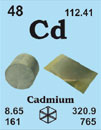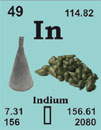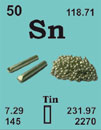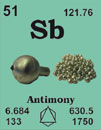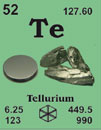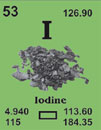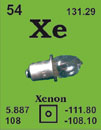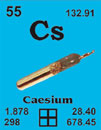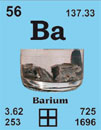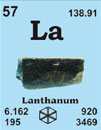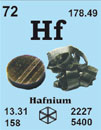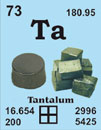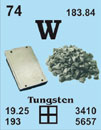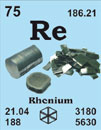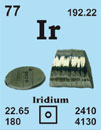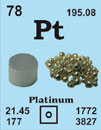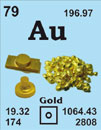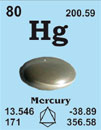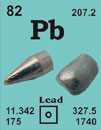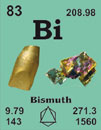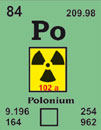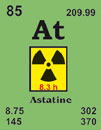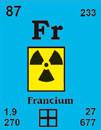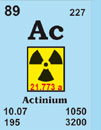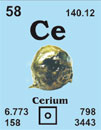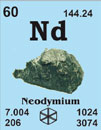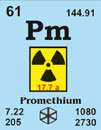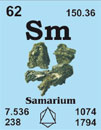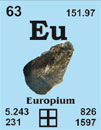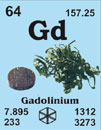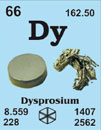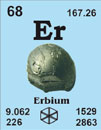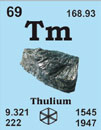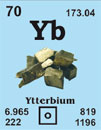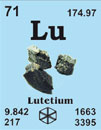Ruthenium 44Ru101.07
1808 von J.A. Sniadecki an der Universität von Vilno, Polen, entdeckt. 1828 wiederentdeckt von G.W. Osann an der Universität von Tartu, Rußland.
[Lateinisch, Ruthenia = Rußland]
French: ruthénium
English: ruthenium
Italian: rutenio
Spanish: rutenio
Beschreibung: Glänzendes, silberfarbiges Metall der Platingruppe. Wird nicht von Luft, Wasser und Säuren angegriffen, löst sich aber in geschmolzenen Alkalien. Verwendet zum Härten von Pt und Pd und als Katalysator.
Ruthenium single crystal properties
| State: |
single crystal |
|---|
| Crystal structure: |
hexagonal |
|---|
| Production method: |
Floating zone |
|---|
| Standard size: |
diameter 6-8mm
thickness 1-2mm |
|---|
| Orientation: |
(0001), (+1-100) and (11-20) |
|---|
| Orientation accuracy: |
<2°, <1°, <0.4° or <0.1° |
|---|
| Polishing: |
as cut, one or two sides polished |
|---|
| Roughness of surface: |
<0.03µm |
|---|
| Purity: |
99.99% |
|---|
| Typical analysis (ppm): |
C 3
H < 1
O 9
N < 5
Cu 1.60
Fe 1.80
Ni < 1
Pb 0.30
Si 0.30
Ga, Hf and Ta are below the detection limit
|
|---|
Materials properties
| Density: |
12.2 g/cm3 |
|---|
| Melting point: |
2309.85 °C / 2583 °K |
|---|
| Boiling point: |
3899.85 °C / 4173 °K |
|---|
| Molar volume: |
8.14 cm3 |
|---|
| Thermal conductivity: |
117 [300 K] Wm-1K-1 |
|---|
| Coefficient of linear thermal expansion: |
9.1 x 10-6 K-1 |
|---|
| Electrical resistivity: |
7.6x 10-8 [273 K] Wm |
|---|
| Mass magnetic susceptibility: |
+5.37 x 10-9(s) kg-1m3 |
|---|
| Young's modulus: |
432 GPa |
|---|
| Rigidity modulus: |
173 GPa |
|---|
| Bulk modulus: |
286 GPa |
|---|
| Poisson's ratio: |
0.25 GPa |
|---|
| Radii: |
Ru5+ 54; Ru4+ 65; Ru3+ 77; atomic 134; covalent 12 |
|---|
| Electronegativity: |
2.2 (Pauling); 1.42 (Allred); 4.5 eV (absolute) |
|---|
| Effective nuclear charge: |
3.75 (Slater); 7.45 (Clementi); 10.57 (Froese-Fischer) |
|---|
| Number of Isotopes (incl. nuclear isomers): |
20 |
|---|
| Issotope mass range: |
92 -> 110 |
|---|
| Crystal structure, (cell dimentions / pm), space group |
hexagonal |
|---|
| X-ray diffraction: mass absorption coefficients: |
CuKα 183 (µ/r) / cm2g-1
MoKα 21.1 (µ/r) / cm2g-1 |
|---|
| Neutron scattering length: |
0.721 b/10-12 cm |
|---|
| Thermal neutron capture cross-section: |
2.56 sa / barns |
|---|
Biological data
| Biological role: |
none |
|---|
| Toxicity |
|
|---|
| Toxic intake: |
most ruthenium compunds are poisonous |
|---|
| Lethal intake: |
LD50 (RuO2, oral, rat)= 4580 mg kg-1 |
|---|
| Hazards: |
Ingested ruthenium is retained in the bones for a long time. The volatile oxide, RuO4 is highly toxic by inhalation. |
|---|
| Level in humans |
|
|---|
| Blood: |
|
|---|
| Bone: |
|
|---|
| Liver: |
|
|---|
| Muscle: |
|
|---|
| Daily dietary intake: |
n.a |
|---|
| Total mass of element in average [70 kg] person: |
n.a. |
|---|
Geological data
| Mineral | Formula | Density | Hardness | Crystal apperance |
|---|
| Ruthenarsenite |
(Ru, Ni) As |
10 |
6 |
orth., met. orange-brown |
|---|
| Ruthenium |
Ru |
12.2 |
6.5 |
hex., met. white |
|---|
| Chief ore: |
from the wastes of nickel refining. |
|---|
| World production: |
0.12 tonnes/year |
|---|
| Main mining areas: |
South Africa, Russia, Canada, USA and Zimbabwe |
|---|
| Reserves: |
n.a. |
|---|
| Specimen: |
available as powder or sponge. WARNING ! |
|---|
| Abundances |
|
|---|
| Sun: |
67.6 (relative to H = 1 x 1012) |
|---|
| Earth's crust: |
c. 0.001 p.p.m. |
|---|
| Seawater: |
|
|---|
| Residence time: |
|
|---|
| Classification: |
|
|---|
| Oxidation state: |
|
|---|

 English
English
 Deutsch
Deutsch


